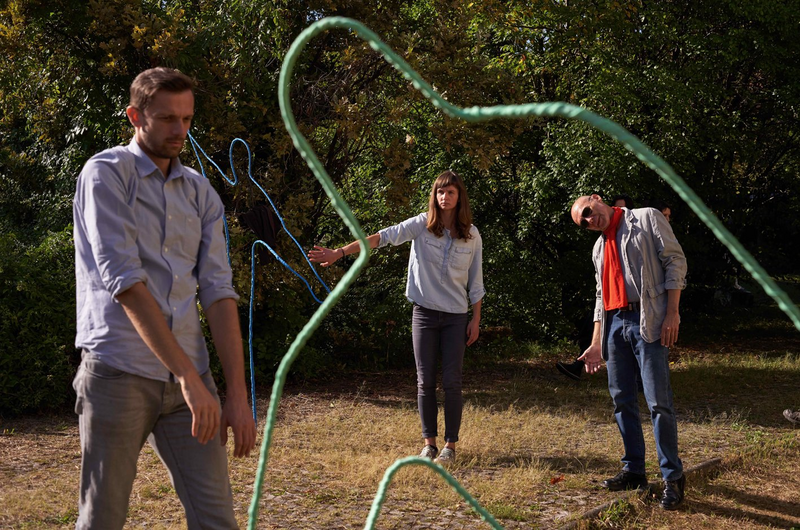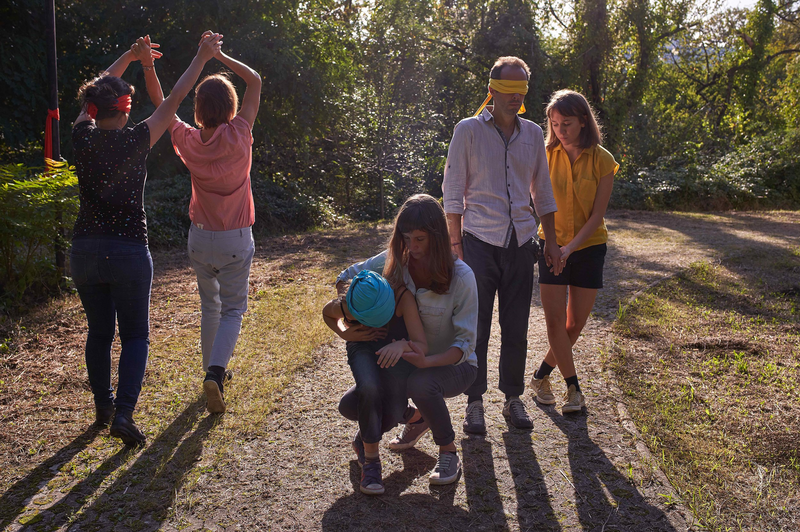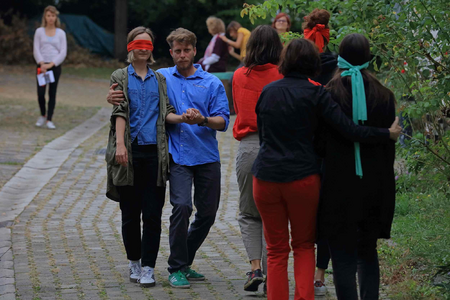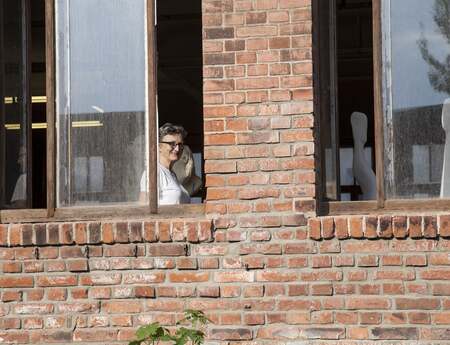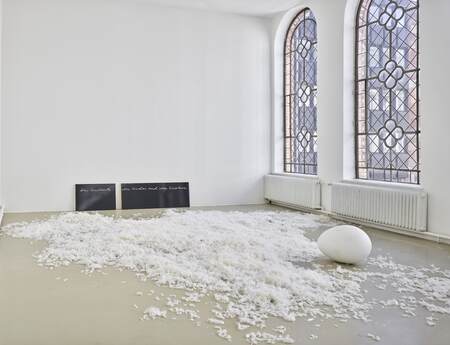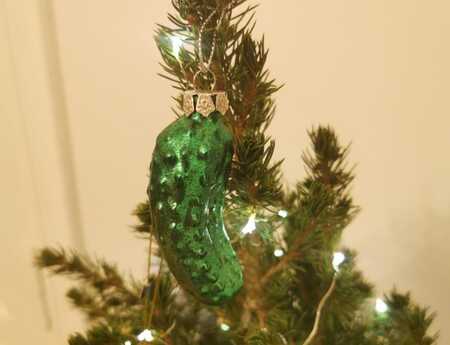The Touching Performance
Developed by the dancer Zrinka Šimičić Mihanović and the artist and sculpture network coordinator Marina Bauer a special happening took place last summer: The Touching Performance, which combined sculpture, dance, movement and touch into a common experience. The idea behind the performative installation is, that the viewer and the observed are both parts of a common experience, both participants and witnesses of the event, and both responsible for what is experienced and seen. We wanted to learn more about this special project and talked to the two initiators:
How did you come up with the idea for this project?
ZRINKA: The Touching Performance is part of an ongoing project entitled What comes about? and that is a continuation of my previous work called Disappearances. The themes are connected through my long-term investigation, research and practice related to soma – the living, moving, touching, relating and constantly changing body. I am also very interested in how we experience dance through dancing/moving as opposed to the experience of watching/witnessing dance as audience. That interest pushed me to further explore the experience of the performer and the audience through my choreographic work. In, Disappearances, I proposed an experiential introduction at the beginning of the, ”show” for the audience and the dancers, as the ground for further watching and dancing.
ZRINKA: The Touching Performance is part of an ongoing project entitled What comes about? and that is a continuation of my previous work called Disappearances. The themes are connected through my long-term investigation, research and practice related to soma – the living, moving, touching, relating and constantly changing body. I am also very interested in how we experience dance through dancing/moving as opposed to the experience of watching/witnessing dance as audience. That interest pushed me to further explore the experience of the performer and the audience through my choreographic work. In, Disappearances, I proposed an experiential introduction at the beginning of the, ”show” for the audience and the dancers, as the ground for further watching and dancing.
In the project, What comes about? my wish was to move further towards the interaction between performers and spectators. I also wanted to approach those roles differently. Sometimes the performance becomes too much about the performer(s) and this time I wanted to approach it as a more democratic and hopefully more inclusive space of shared experience where each participant is equally important and responsible for his/her own experience as well as for the final outcome.
Preparing the mentioned project, in January 2019, Marina invited me to the round table discussion on the topic of ”touch”, which was part of, start'19, which she organized in the Museum of Contemporary Art in Zagreb. Before, during and after the round table we exchanged a lot on this topic and realised we had many similar interests and fascinations. Marina’s long-term investigation of touch and movement in relation to sculpture thus came into dialogues with my own questions and out of that, The Touching Performance, was created.
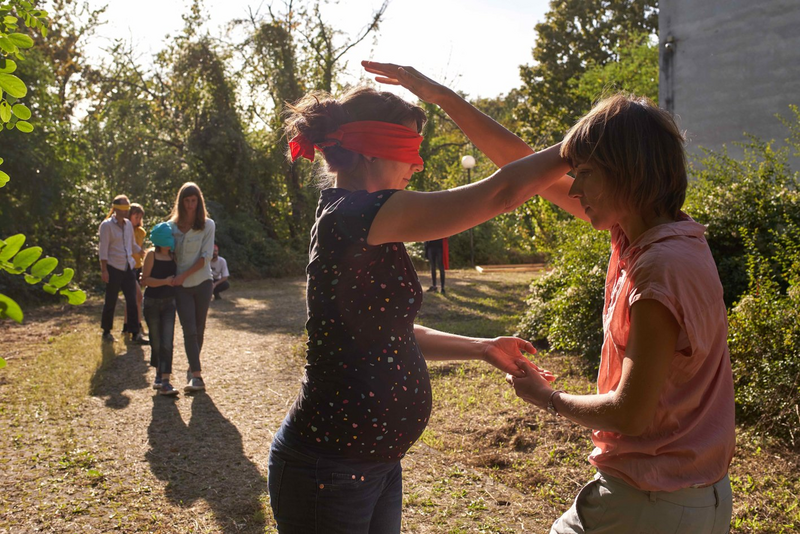
How difficult/ easy was it to combine the performative with the visual arts to carry out this project? Were there any (significant) obstacles during the realization of the project?
MARINA: As Zrinka mentioned above, in my work I am interested in the role of touch and kinaesthetic elements when experiencing sculpture. Most of my works call for physical engagement and interaction, and I believe that moving and touching is in the core of sculpture. I find inspiration in my own bodily experiences— like digging through sand (Memories II), lying in the grass (Ancient Sleeper) or exploring a cave (Encounter with Ourselves), and sometimes, when working on my sculptures, I have a feeling that I could better dance the idea than find the exact form of it. (Of course, it is only a feeling!)
MARINA: As Zrinka mentioned above, in my work I am interested in the role of touch and kinaesthetic elements when experiencing sculpture. Most of my works call for physical engagement and interaction, and I believe that moving and touching is in the core of sculpture. I find inspiration in my own bodily experiences— like digging through sand (Memories II), lying in the grass (Ancient Sleeper) or exploring a cave (Encounter with Ourselves), and sometimes, when working on my sculptures, I have a feeling that I could better dance the idea than find the exact form of it. (Of course, it is only a feeling!)
Being invited by Zrinka to work together was a wish come true. We both find bodily experience very important and both wish for the audience to be able to experience the movement and touch incorporated in our work and not just to observe it.
So, the inspiration for the starting point was clear and strong, but it was not simple and obvious how to carry on.
We wanted to merge our experiences as artists and find a form in which the audience will be engaged by moving and touching. It was very interesting to create objects and circumstances which encourage movement as well as raise awareness of it. The main challenge I remember was to find balance between the choreographed, precalculated parts and the freedom given to audience to investigate on their own and be responsible for their own experience.
Do you think that performative and visual arts are far away from each other or are they easy to be combined? How do these two art types come together?
ZRINKA: No, they are not far from each other and they have been combined in different ways for many years and centuries. The interest in the intermedia and interdisciplinary approach for me is that we face the problem from different perspectives and different media, each one having its own ”rules” and ”resistance”. In my experience the concept is thus sharpened and the work becomes more complex. Through different intermedia collaborations, what is most clear for me is that each media has its own time. And working together we have to find and adapt to different timing.
The body is always in the present and dance is one of the most ephemeral art forms. That is the challenge but also the beauty of it. The evanescence of dance show us the impermanence of everything, including us. And thus, the relation of touch to choreography is very particular. By touching the choreography, we are touching the change. With many visual forms the relationship to time is different. They condense time, change and movement into the form that is experienced again in different timing than that of its creation.
So, for Marina and me, finding the right timing, duration and format was part of the research.
Has anyone of you carried out an interdisciplinary project like Performance to be touched before?
ZRINKA: I have carried out a few interdisciplinary projects before this one, and most of them were collaborations with visual artists. They include collaboration with visual artist Martina Mezak in 7 silences for 7 days, Moveranje and cruel, cruel nature, as well as collaboration with animation artist Michaela Mueller in Trag / Trace / Spur and Up the Stairs, behind Doors, out the Window.
Each one of them was very different, and even with the same person, each new project has been a unique experience. What was different about the collaboration with Marina was that we have abandoned the performative format. We came up with the work that we call ”performance” but the format of it is actually a temporary installation in space with performative/choreographic elements…so it really is at the border between performance and exhibition which was both interesting and challenging to conceptualize and it demands, as well, a very specific presence from the performers.
MARINA: I have had little experience similar to this one where two medias are equally important from the beginning.
Can you describe (briefly) the six stations of the exhibition?
MARINA: As Zrinka said, the important step was to abandon the performative format and to decide the installation/exhibition format with performative/choreographic elements. We came up with six stations. But one thing from the performative format we did not abandon, and it made a difference, was silence. We asked the visitors to be silent in the installation space.
Another important element of the work is its location. It is a site specific performance created in the surroundings of the Academy of Fine Arts… the site where the city meets the forest, the urban merges with the nature.
After getting instruction about the silence, the map of the site and a textile wrap which made them visibly part of the performance, they were invited to explore the area of performance in their own rhythm. The performance was held from 12 to 2 PM, and people were invited to join and leave at any time during the scheduled period.
The Touching Performance develops through 6 stations - “Dock”, “Starting Guides”, “Islands for the Barefoot”, “Choreography through Touch”, “With Closed Eyes”, and “Shape Yourself”.
Opposite to the entrance was station A: Dock where printed messages, which raise awareness, were hanging from the tree. “What is touching me?”, “Is the wind blowing?”, “How many steps do I have to the nearest person?", “I will turn around me”, “I will look into the sky”, “Movement is touch”, “I will look somebody in the eye”, “ I am moving my fingers”, “I will breath in and breath out five times”, “Can I touch the branch?”, “I am observing people around me”, “I will lean on somebody”, “The one who is touching is being touched” etc.
At station B: Starting Guides there were eight silhouettes of figures in movement installed. Sculptures, made of metal bars wrapped by fabric, were guides for the observers to go through or around them and also to induce the specific movement.
At station C: Islands for the Barefoot visitors were invited to walk barefoot and experience several areas with different material.
If visitors decided to experience Choreography through Touch at station D, they were to sit on one of three tree trunks with blue sponge cushion and wait for one of eight performers to approach them.
At station E: With Closed Eyes visitors were to wait for a performer at a marked place. The guided walk with eyes closed for 10-15 minutes was developed differently every time according to the response from the visitor. Every performer also developed his/her personal approach through a series of rehearsals.
At station F: Shape Yourself visitors were given a piece of clay to mould their experience and to place anywhere in the area and leave it.
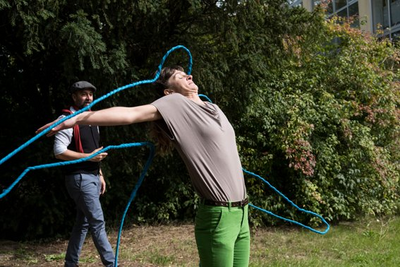
MARINA: We are delighted by the reception of this installation/performance. Visitors were engaged, they were visibly emerged in every action and very often quite emotional when leaving. We also researched their experience with a focus groups method. We conducted four group interviews, and, what is interesting, is that most of the people reported a very strong experience while specifying different parts of the installation as favourites. Also, most of them missed a station, or decided not to take part, but it was always a different one. It seems that we succeeded in making a good combination of approaches so that people of different affinities and different moods would all find their way through the installation with similar experiences of deep connection to oneself and to the environment at the end.
Each one of you works in a different art form. How would you describe your roles in working together as creators of the project?
ZRINKA: Our roles in this project were specific and mostly related to our media. We also had, each one of us, more specific questions that we wanted to elaborate on in this work related to our individual histories and previous experiences.
MARINA: I do not recognize specific roles due to our art forms. We primarily got together because of our joint affinity to experiences from our summers at the same island, which mostly include bodily experience, as, for example, a love for walking barefoot. So, we had common inspiration, and we contributed to the project through our specific knowledge.
Was it easy to find/ create these stations that aim at large/ general audiences (meaning that adults, children, teenagers would be interested to participate in this exhibition)?
MARINA: We were not sure how people would react, and we did put quite a lot of thought to it. We were asking ourselves all the time about how people might react to being touched by strangers, and also to being watched while engaging in an interactive installation. We were also worried that people would not be willing to take their shoes off to experience the barefoot areas.
But we were also sure that everybody has a universal craving for movement and touch, and that people of all ages bear curiosity and playfulness within themselves. And according to the reactions, we succeeded.
Are you planning any other exhibitions?
ZRINKA: Yes, we are planning the continuation of our collaboration. The next project is planned for May 2020 and is developed around the theme of development and transformation and it will be realized through an interplay between four dancers and paper elements with strong associative potential. The venue is planned at Education Department of the Academy of Fine Arts in Zagreb in the space with big windows offering the beautiful merging of the inside and the outside.
In 2021 we are planning the exhibition, Choreography in Museum, that will be realized with other dancers, inspired by the station 'Starting Guides', sculptures of silhouettes in movement. We are planning new editions of, The Touching Performance, in 2020/2021 as well.
